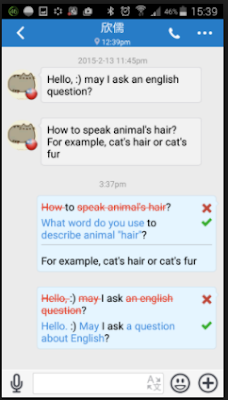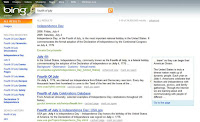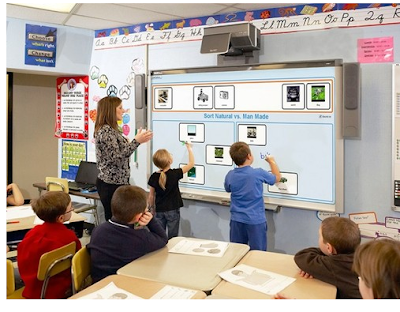😍 Assalamualaikum and hello beautiful girls and lovely boys 😍
Have you ever heard about Instructional Courseware Design (ICD)? If you have never heard about Instructional Courseware Design (ICD), you can keep on scrolling down to read more about it.👀
In this entry, I am going to talk about my reflection on the topic Instructional Courseware Design (ICD). ICD is a process of creating and developing instructional courses or materials that makes it efficient, appeal and effective to the learners who wants to acquire the skills and knowledge.
Based from my discussion during class, I have learnt that ICD is suitable for people who are interested in designing the course. They use Instructional Design based on what is being instructed. For example, at the back of your revision book, you can find a CD. It consists on the topics that you are going to learn. As for teachers or educators, they can apply Instructional Courseware Design in their lesson plans to make it more attractive.
Hence, in order to design and create an instructional experience, it is a necessary for teachers or educators to figure out the needs of the learners, define the learning objectives and create some intervention for learners to achieve the objectives
ICD is a mix of Behaviourist and Constructivist learning theory. Here are the things that I have learnt and understand about Behaviourist and Constructivist learning theory.
Behaviourist learning theory: It deals on learners' behavior towards the given stimulus. It is related to how the teachers make their students behave. I am going to give you the simplest example in order for you to understand how this theory work.
1. Dog and bell: Do you know that dogs are attracted to bell? If the owners want to control or grab their dogs' attention, some of them will ring a bell. When dogs hear a bell, they would straight away control their behavior.
2. Hamster and food: Back then, I had two hamsters. Sometimes, my hamsters did not followed my instructions. So, instead of just putting their foods and waiting for them to eat while they made some messed in their cage, I changed my strategy. I took their food and try to play the food with them. Strange thing happened when they instantly reacted and behaved according to my hand's direction. By then, I knew that I had applied the behaviouristic learning theory with my hamsters. 😂😂
Constructivist learning theory: The learners build their knowledge on specific subjects based upon their prior knowledge. It is an active learning process where the students initiate the action and execute the learning process while the teacher is just a facilitator.
Picture A: The traditional method in teaching and learning
Picture B: Constructivism learning takes place.
Learners Needs
It refers to what the learners want to get out of the education and the learner's current skill and knowlege. These are the few things that I understand during my class. Needs analysis have to be done to ensure the effectiveness of learning takes place. Hence, syllabus, survey, free writing and public records are things that needed in analysis. We need syllabus to know the students level while we need to do survey to know our students background such as their knowledge, gender and age. We can give a free writing to the students like giving them freedom to write anything so that we can get to know their writing style. Public records are needed to record the information from the analysis that we had carried out.
Instructional Design (ISD)
Instructional Design (ISD) involves creation of syllabus (done by content expert), planning of lessons,material selection and adaptation (from where the sources or information are taken) as well as planing the implementation to instruct learners in designated lessons. ISD requires learners' needs and learning outcomes to ensure unified objectives could be achieved at the end of the lesson.
Instructional Design In CALL
From what I have learnt in CALL, ISD is used to help in creating computer courseware for learning. However, it is important to remember that the courseware acts only as supplement to the lesson, not complete replacement of teachers or lessons in class. This courseware can be designed for use inside and outside of lesson.
PLATO
PLATO being used by the student
PLATO refers to Programmed Logic For Automated Teaching Operations. Historically, PLATO (1960-2006) is the first computer assisted instruction system that can be programmed to teach any course even though it is expensive.
ADDIE MODEL
Based from my own understanding, I believe that course design is a cyclical process. The most well-known model is referred to by its acronym: ADDIE. Here are the things that I have learnt about ADDIE MODEL.
A (Analysis): We need to identify learners' needs and learning outcome.
D (Design): We need to outline instructions for activities and assessments in the courseware based on learners' needs and learning outcomes.
D (Development): We start to create and assemble the content based on the outline in designing phase.
I (Implementation): The procedure for learners and facilitators to use the courseware is developed.
E (Evaluation): We evaluate the impact of courseware through formative and summative evaluation.
ADDIE is a framework for the developmental of instructional coursework.
Conclusion
Overall, ICD is related with ISD as it depends heavily on the learners' needs and learning outcome. In order to design a courseware properly, I would suggest that we use ADDIE model to framework our work from the beginning until the end. In terms of formative evaluation, it is very effective, useful and relevant whereas in terms of summative evaluation, it seems that the effectiveness of the courseware can be viewed as a whole. Hence, in this topic I have learnt how I can apply and implement ADDIE model to design my own courseware.
That is all for this entry.😎 If you have any questions, feel free to ask me.😁😄
Until then, take care and be safe people.😍💖
Wait for my next entry, okay😄





















































